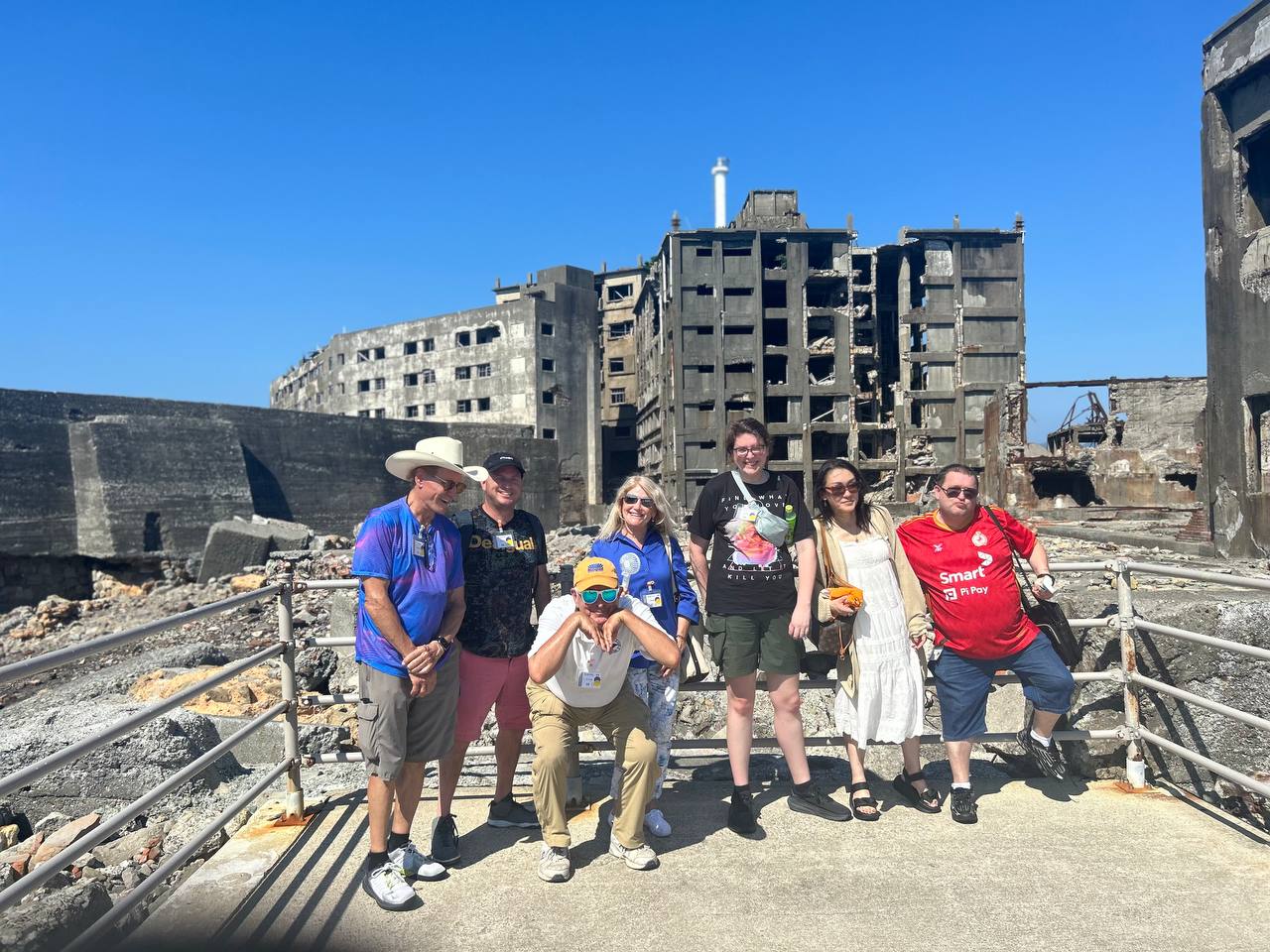August in Japan is hot, sticky, and brimming with a sense of history that seeps into every corner of the country. This time, my journey took me to a place that I’d been itching to explore for years—Battleship Island, known locally as Gunkanjima, off the coast of Nagasaki.
The allure of this eerie, abandoned island has fascinated me ever since I first saw its silhouette in a documentary years ago. It’s not in Hiroshima, as many mistakenly believe, but its connection to Japan’s wartime past gives it a gravitas that’s palpable.
To read about Urbex click here.
Prepping for the Trip
My dull day in Nagasaki saw me soaking up the local vibe, eating my weight in champon (the local noodle specialty), checking out the Peace Park and Atomic Bomb Museum, but most important for me was this place. The history here is heavy, and the idea of visiting a place like Gunkanjima, a symbol of both Japan’s industrial might and its eventual downfall, felt like a fitting next step.





Getting to Gunkanjima isn’t as simple as hopping on a ferry and setting off. The island is fragile, decaying, and frankly, dangerous in parts, so access is tightly controlled. You’ve got to book a spot on an organized tour, and these fill up fast, especially in the summer months. I opted for a tour with Gunkanjima Concierge, a company that’s known for its knowledgeable guides and focus on the history of the place.
Is this Dark Tourism? It sure is
The Journey Begins
The morning of the tour was already sweltering by the time I reached the Digital Museum. Alas they had not imformed us that the boat don’t actually leave until 1.15, meaning we were there more than an hour early. This was made up to us though with free food and drinks at the cafe there. This really offered some great dessert. After this the 5 minute walk to the pier happened.



The boat ride out to Gunkanjima is about 45 minutes, giving you plenty of time to take in the coastal scenery. But as we got closer, the island’s infamous silhouette began to emerge on the horizon. From a distance, it does look like a battleship, all jagged edges and dark, looming structures. The closer we got, the more I could see the decay—buildings crumbling, windows shattered, nature slowly reclaiming what was once hers.
To read about Flat Sake Bar click here.
Setting Foot on the Island
Stepping off the boat onto the island, I was immediately struck by the silence. The usual sounds of life—birds, insects, the chatter of people—were absent. Instead, there was just the wind, whistling through the broken windows and the occasional creak of an old structure giving in to time.
Our guide, a young Filipino man with a deep knowledge of the island’s history, led us through the designated walkways. Safety is a big concern here, and you’re not allowed to wander off on your own. This was definitely one element where I really felt the Japanese love of rules and regulations, much like in Fukushima and nothing like Chernobyl.



Life on Gunkanjima
As we walked, the guide painted a vivid picture of life on Gunkanjima during its heyday. At its peak in the 1950s, the island was home to more than 5,000 residents, packed into concrete apartment blocks that rose like sentinels over the coal mines below. The conditions were harsh, with limited space, little greenery, and the ever-present dust and noise of the mines. But for many, this was a place of opportunity, a community built on the promise of prosperity in post-war Japan.
The remnants of that community are still visible today, albeit in a state of eerie decay. The school, once filled with the laughter of children, now stands empty, its walls crumbling and its playground overtaken by weeds. The apartment blocks, once teeming with life, are now skeletons of their former selves, their windows shattered and their interiors exposed to the elements.
Battleship Island Hiroshima – True Dark Tourism
Visiting Gunkanjima in August added to the surreal atmosphere. The oppressive heat and humidity seemed to amplify the sense of abandonment, making the island feel even more desolate. It’s hard not to feel a twinge of sadness as you walk through these ruins, knowing that this was once a thriving community, now left to rot in the middle of the sea.
But there’s also a strange beauty to it all. The way the light filters through the broken windows, the contrast between the concrete ruins and the encroaching greenery—it’s a photographer’s dream, and I found myself snapping photos at every turn. Yet, there’s an unspoken rule here: treat the place with respect. It’s not just a tourist attraction; it’s a memorial to the people who once called this place home.





Final Reflections
As the boat pulled away from Gunkanjima, I couldn’t help but feel a mix of emotions. The island is a stark reminder of the impermanence of human achievement, a place where nature is slowly reclaiming what was once taken from her. Visiting Battleship Island is not just about exploring an abandoned place; it’s about connecting with a forgotten piece of history, one that still resonates in the modern world.
If you ever find yourself in Nagasaki, take the time to visit Gunkanjima. It’s a journey into the past that will stay with you long after you’ve returned to the mainland, a haunting experience that offers a unique perspective on Japan’s industrial rise and fall. Just remember to pack plenty of water, wear sturdy shoes, and, most importantly, approach the island with the reverence it deserves.
You can check out my Extremes of Japan Tour here.

